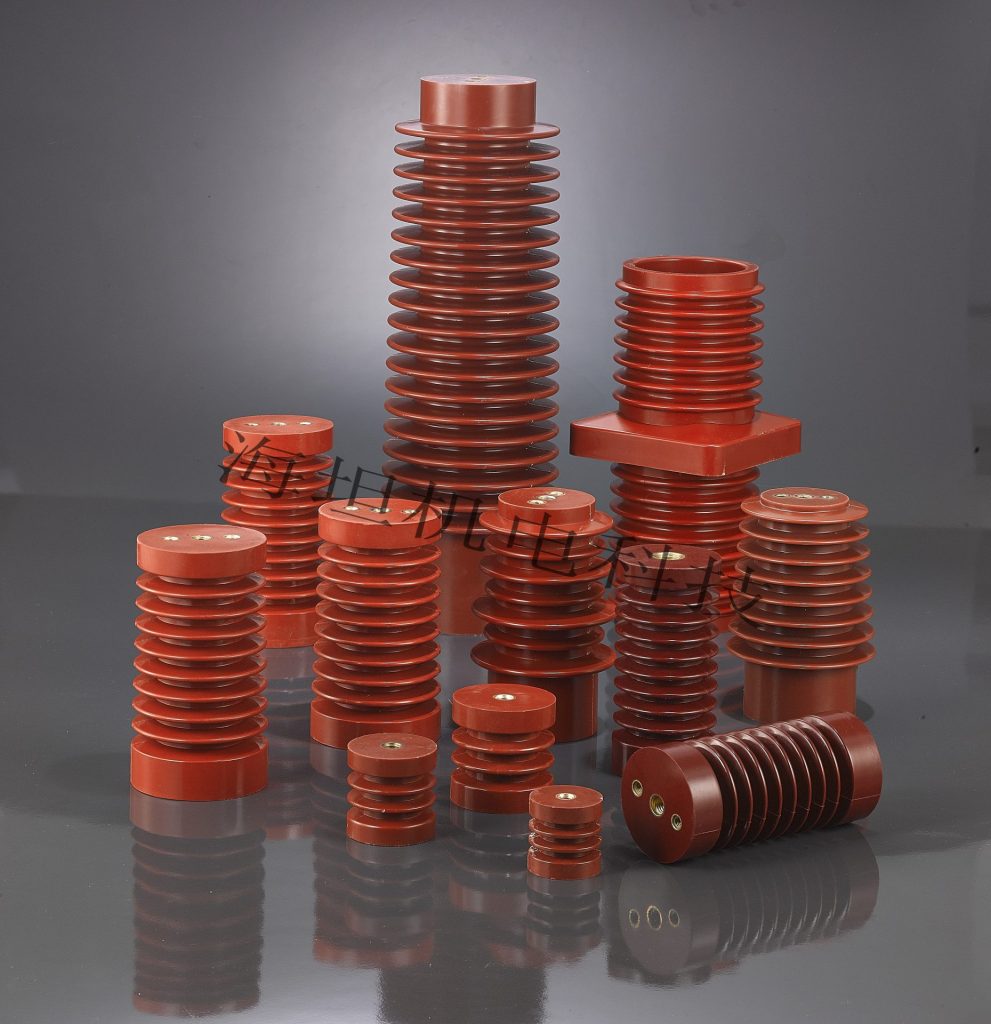SM Insulator for DC Combiner Box: What It Is and Why You Need It
1. Introduction
In a photovoltaic (PV) system, the DC combiner box is a key component. It combines the outputs of multiple solar panel strings and channels them into a single line to the inverter. Inside this compact but critical device, electrical safety and performance depend on one small but powerful part: the SM insulator.
An SM insulator may not grab headlines, but it plays a crucial role in preventing failures, ensuring smooth energy transfer, and protecting equipment and personnel. In this blog, we’ll explore what an SM insulator is, how it works, and why choosing the right one can make a significant difference in your system’s performance and longevity.
2. What Is an SM Insulator and How It Works?
An SM insulator (Specialty Molding insulator) is a low voltage electrical insulator designed to provide mechanical support and electrical isolation for busbars and conductors in DC combiner boxes and other electrical assemblies. It is typically made from high-strength thermoset materials like BMC (Bulk Molding Compound) or SMC (Sheet Molding Compound), often reinforced with fiberglass for added strength.
SM insulators feature a compact cylindrical design, often with a raised middle section for easy wrench-tightening during installation. They come with brass or zinc-coated steel inserts, allowing secure, corrosion-resistant connections.
Key Technical Specs of SM Insulator:
| Feature | Specification |
| Material | BMC or SMC composite |
| Temperature Rating | -40°C to +140°C |
| Electrical Resistance | >1016 Ω·cm |
| Flame Retardancy | UL94 V-0 (typical) |
| Certification | CE, RoHS, SGS (available on request) |
These SM epoxy insulators provide both electrical insulation and mechanical integrity. Their dielectric strength helps prevent leakage currents, while the mechanical design ensures safe mounting of busbars.
3. 5 Critical Roles of SM Insulators in DC Combiner Boxes
3.1 Electrical Insulation: Preventing Short Circuits and Leakage
In PV systems, DC voltages can exceed 1000V. The SM insulator acts as a busbar support insulator, maintaining critical air and creepage distances to prevent short circuits. The insulator material, typically epoxy resin composite, offers high insulation resistance, reducing the chance of arc faults or unwanted current paths.
Fun fact: A high-quality SM insulator can keep DC leakage currents under 0.5 mA/kW, enhancing overall system safety.
3.2 Mechanical Support: Ensuring Stability of Busbars and Conductors
Think of SM insulators as the shock absorbers of your DC combiner box. They provide robust support for busbars, minimizing vibration, thermal expansion stress, and torque-induced damage. Many models are tested to handle dynamic loads above 20 N·m and vibrations in the 5–500 Hz range.
The result? A solid system where conductors stay firmly in place and out of trouble.
3.3 Environmental Durability: Resistance to Temperature, Humidity, and UV
SM insulators made from BMC/SMC can withstand harsh field conditions:
- Temperature range: −40°C to +140°C
- Humidity resistance: Passes 85°C/85% RH 2000-hour tests
- UV protection: Resistant up to 500kWh/m² at UV-A 340nm
This makes them ideal for solar installations that face blazing sun, salty air, or sub-zero temperatures.
3.4 Safety Enhancement: Protecting Against Electrical Hazards
Safety isn’t just about insulation. It’s about predictable failure modes. Some advanced SM low voltage insulator designs now include visual failure indicators (such as color-changing caps when heat damage occurs) and arc containment features.
Combined with UL-certified flame-retardant materials, these features minimize fire risks and enable better preventive maintenance planning.
3.5 Facilitating Maintenance: Simplifying Inspection and Troubleshooting
Thanks to their modular, tool-friendly design, SM insulators simplify disassembly and replacement. Raised mounting points and brass inserts make it easy to remove conductors and inspect components. And because they maintain consistent busbar alignment, inspections become safer and faster.
Want more tips on maintaining your busbar insulators? Check out our in-depth guide here: Busbar Insulator Maintenance and Management
4. Benefits of Choosing High-Quality SM Insulators
Cutting corners on SM insulators might save a few dollars now, but it could cost you in downtime, repairs, or even fire hazards. Here’s what high-quality models offer:
- Compliance with international standards (CE, RoHS, IEC 60664)
- Consistency in insulation resistance and mechanical tolerance
- Extended system uptime: MTBF increases as connection quality improves
- Lifecycle matching with PV panels (25+ years durability)
| Benefit | Result |
| High insulation strength | Reduces fault and arc risks |
| Reinforced insert material | Resists corrosion and fatigue |
| Custom color & size | Integrates seamlessly into custom enclosures |
When you need your system to perform reliably for decades, investing in quality electrical insulators isn’t just smart—it’s essential.
5. SM Insulator Installation and Maintenance Recommendations
Installation Tips:
- Maintain correct clearance distances per IEC voltage standards
- Use proper torque settings to avoid cracking or loosening
- Keep the working surface dry and clean during installation
Maintenance Checklist:
- Inspect visually for discoloration, cracks, or carbon tracking
- Perform insulation resistance tests every 6-12 months
- Use non-abrasive cleaning tools (no solvents or wire brushes)
- Replace insulators showing signs of mechanical wear or thermal damage
Pro tip: Record all insulation resistance values in a log. Over time, this trend data helps spot early degradation before failure occurs.
6. Conclusion
The humble SM insulator is a foundational component that supports, protects, and extends the life of your DC combiner box and the broader photovoltaic system. With the growing scale of solar installations, the need for robust, reliable, and easy-to-maintain SM busbar insulators has never been more critical.
From epoxy resin insulator properties to real-world performance in extreme temperatures, choosing the right product makes a measurable difference. Don’t settle for generic parts—select SM insulators engineered for durability, safety, and performance.
Would you like to find out more about electrical insulation in solar power? Browse our complete range of SM low-voltage insulators and get in touch with our team for specifications, certifications, or bespoke solutions.
--- END ---
© Copyright 2024 China Haitan Electromechanical Technology Co., Ltd. All rights reserved.SUPPORT BY:JUNJ Privacy Policy



